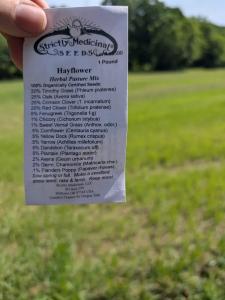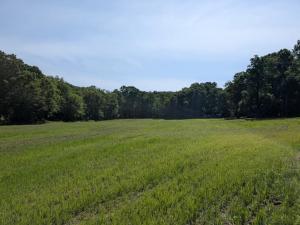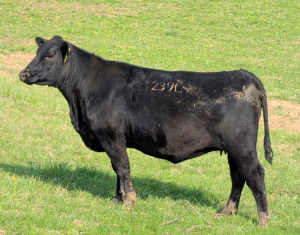Bell Township Farmer Cody Deluisio Unveils Eight‑Acre 'Medicinal Pasture' Test Plot to Boost Health and Rebuild Soil
Cody Deluisio seeds 8-acre medicinal pasture with chicory, clovers and herbs, cutting inputs and boosting soil health while protecting Beaver Run Creek.
What Makes a Pasture “Medicinal”
A medicinal pasture uses plants that provide both nutrition and bioactive compounds already present in nature. Historic hayfields contained dozens of herbs that shattered during haymaking; the resulting “hayflower” fines were steeped as teas, compresses and poultices for ailments ranging from colds to joint pain. Today’s single‑species hay rarely offers that diversity. Seed suppliers such as Strictly Medicinal Seeds have responded with mixes like their certified‑organic Hayflower Medicinal Pasture Mix. It contains timothy, oat, crimson and red clovers, fenugreek, wild chicory, sweet vernal grass, cornflower, German chamomile, yellow dock, yarrow, dandelion, broadleaf plantain, avens and Flanders poppy, providing forage, pollinator habitat and a ready source of medicinal foliage.
Deluisio’s custom blend includes many of the same species plus sainfoin and birdsfoot trefoil, both noted for condensed tannins that may reduce parasite pressure in ruminants.
. Chicory and plantain supply deep mineral‑scavenging roots and remain green through dry spells
. Yarrow, chamomile and dandelion attract beneficial insects while adding aromatic compounds that cattle readily graze.
Project Objectives
Eliminate synthetic fertilizer
Legumes in the mix capture atmospheric nitrogen while tap‑rooted herbs cycle buried minerals to the surface.
Remove routine dewormers whenever practical
Forbs such as sainfoin and birdsfoot trefoil contain condensed tannins. Chicory contains sesquiterpene lactones. Both compounds have been associated in peer‑reviewed studies with lower parasite activity in ruminants.
Ensure year‑round forage without irrigation
Deep‑rooted species tolerate both flood and drought, maintaining green growth through Western Pennsylvania’s erratic weather.
Protect the Beaver Run watershed
Continuous ground cover stabilizes soil, slows runoff, and reduces nutrient leaching during heavy rain events.
Species Selection
The seed blend was created after reviewing trial data from Penn State, Cornell, and Utah State. The core species include:
White clover (Trifolium repens) – frost‑seeded to form a living mulch that fixes nitrogen and shades the soil surface.
Red clover (Trifolium pratense) – adds biomass and extends nitrogen fixation into late summer.
Birdsfoot trefoil (Lotus corniculatus) – tannin‑rich legume known for palatability and potential parasite suppression.
Sainfoin (Onobrychis viciifolia) – deep‑rooted legume that tolerates both alkaline and acidic soils, supplies condensed tannins, and flowers for extended pollinator support.
Chicory (Cichorium intybus) – four‑ to six‑foot taproot mines calcium and potassium, remains green under heat stress, and supplies lactones.
Plantain (Plantago lanceolata) – broad leaves shade soil, reduce evaporation, and supply minerals.
Yarrow (Achillea millefolium) – aromatic forb that attracts beneficial insects and continues growing in drought.
Small percentages of perennial ryegrass and meadow fescue were included to ensure quick spring growth and even grazing distribution.
Establishment Methodology
Living Clover Mulch
In early March, Cody Deluisio seeded inoculated white clover in with oats. As temperatures warmed, the clover germinated ahead of weeds and formed a nitrogen‑fixing groundcover.
Inter‑Seeding Medicinal Species
In late April, a seed drill planted chicory, plantain, sainfoin, birdsfoot trefoil, red clover, and supporting grasses at a seeding depth of one‑half inch. Seeding rates followed university recommendations to balance competitiveness with diversity.
Adaptive Grazing Framework
Eighteen Angus cows and calves will rotate through paddocks for several days, followed by at least thirty‑five days of rest. Portable poly‑braid fencing and a solar‑powered well allow quick moves and even manure distribution.
Monitoring and Documentation
Stella Manor will track the cost of establishment, grazing days per acre, forage density, species composition, and soil organic matter.
Anticipated Outcomes
Reduced Production Costs
Eliminating synthetic nitrogen, routine dewormers, and frequent mowing is expected to lower annual input costs by $120 to $150 per acre.
Stable Forage Supply
With tap‑roots extending beyond three feet, chicory, sainfoin, and plantain are expected to remain productive during Western Pennsylvania’s summer dry spells while tolerating brief flood conditions in spring.
Soil Health Improvement
Continuous living roots and added surface litter should increase organic matter and improve water infiltration over time.
Water‑Quality Protection
A vegetative filter strip at the lower boundary slows runoff to Beaver Run Creek. Reduced fertilizer use means less nitrogen and phosphorus risk downstream.
Livestock Well‑Being
A diverse botanical diet provides trace minerals and bioactive compounds that support rumen efficiency and resilience, potentially reducing veterinary interventions.
Transparency and Knowledge Sharing
All seed rates, establishment costs, grazing schedules, and soil test results will be published at Deluisio.com. The goal is to give nearby producers a clear, replicable pathway toward fertilizer‑free, climate‑resilient pasture. Data will be shared upon request. No public field day is planned, but producers may contact Stella Manor for individual visits by appointment.
About Cody Deluisio and Stella Manor
Cody Deluisio is transitioning from a career in network engineering to full‑time regenerative agriculture. His farm, Stella Manor, focuses on calm‑tempered Black Angus genetics, rotational grazing, and data‑driven decision making. The Deluisio Angus seed‑stock program markets bulls and females suited for low‑input grass‑based systems.
Cody Deluisio
Stella Manor
+1 724-204-1674
codydeluisio@deluisioangus.com
Visit us on social media:
LinkedIn
Instagram
Facebook
YouTube
TikTok
X
Legal Disclaimer:
EIN Presswire provides this news content "as is" without warranty of any kind. We do not accept any responsibility or liability for the accuracy, content, images, videos, licenses, completeness, legality, or reliability of the information contained in this article. If you have any complaints or copyright issues related to this article, kindly contact the author above.
Cellular Health Supplement Market Reach USD 3,668.1 Million by 2035 as Demand for Anti-Aging & Immunity Support Surges
Autonomous Robots Market to Reach USD 34.64 Billion by 2035, Powered by Healthcare and Logistics Demand
Synthetic Zeolites Market | Industry Insights 2031: Demand Trends & Global Expansion
Więcej ważnych informacji
 Jedynka Newserii
Jedynka Newserii

 Jedynka Newserii
Jedynka Newserii

Farmacja

Nowy pakiet farmaceutyczny ma wyrównać szanse pacjentów w całej Unii. W Polsce na niektóre leki czeka się ponad dwa lata dłużej niż w Niemczech
Jeszcze pod przewodnictwem Polski Rada UE uzgodniła stanowisko w sprawie pakietu farmaceutycznego – największej reformy prawa lekowego od 20 lat. Ma on skrócić różnice w dostępie do terapii między krajami członkowskimi, które dziś sięgają nawet dwóch–trzech lat. W Unii Europejskiej wciąż brakuje terapii na ponad 6 tys. chorób rzadkich, a niedobory obejmują również leki ratujące życie. Nowe przepisy mają zapewnić szybszy dostęp do leków, wzmocnić konkurencyjność branży oraz zabezpieczyć dostawy.
Handel
Wzrost wydobycia ropy naftowej nie wpłynie na spadek cen surowca. Kierowcy jesienią zapłacą więcej za olej napędowy

Sierpień jest trzecim z rzędu miesiącem, gdy osiem krajów OPEC+ zwiększa podaż ropy naftowej na globalnym rynku; we wrześniu nastąpi kolejna zwyżka. Kraje OPEC, zwłaszcza Arabia Saudyjska, chcą w ten sposób odzyskać udziały w rynku utracone na skutek zmniejszenia wydobycia od 2022 roku, głównie na rzecz amerykańskich producentów. Nie należy się jednak spodziewać spadku cen ropy, gdyż popyt powinien być wysoki, a pod znakiem zapytania stoi dostępność ropy z Rosji. Nie zmienia to faktu, że jesienią ceny paliw na stacjach zazwyczaj rosną, a w największym stopniu podwyżki dotyczyć będą diesla.
Nauka
Szacowanie rzeczywistej liczby użytkowników miast dużym wyzwaniem. Statystycy wykorzystują dane z nowoczesnych źródeł

Różnica między liczbą rezydentów a rzeczywistą liczbą osób codziennie przebywających w Warszawie może sięgać nawet niemal pół miliona. Rozbieżności są dostrzegalne przede wszystkim w dużych miastach i ich obszarach funkcjonalnych. Precyzyjne dane populacyjne są tymczasem niezbędne w kształtowaniu usług społecznych i zdrowotnych, edukacyjnych, opiekuńczych, a także w planowaniu inwestycji infrastrukturalnych. W statystyce coraz częściej dane z oficjalnych źródeł, takich jak Zakład Ubezpieczeń Społecznych, są uzupełniane o te pochodzące od operatorów sieci komórkowych czy kart płatniczych.
Partner serwisu
Szkolenia

Akademia Newserii
Akademia Newserii to projekt, w ramach którego najlepsi polscy dziennikarze biznesowi, giełdowi oraz lifestylowi, a także szkoleniowcy z wieloletnim doświadczeniem dzielą się swoją wiedzą nt. pracy z mediami.











.gif)

 |
| |
| |
|